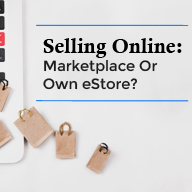Customer-Centric Culture: The Mantra for Sustainable Business Success

Business Development
507 week ago — 6 min read
We are fortunate to be living in extremely exciting times, where we are likely witnessing the most monumental shifts in business ever.
New age businesses are sprouting everywhere and established businesses are reinventing themselves. Constraints and entry barriers to start businesses and grow existing ones have become less daunting than ever before – there is improved access to capital and even these are being redefined by 'lean' business models; access to technology is easier than ever before with 'open source' solutions and development communities; aggregators of services are more often valuable than the providers of the service...the list of reasons for this radical shift is rather long.
But we also have a ringside view of these changes, since we also sit in judgment - the seat of today's aware and demanding consumer.
As consumers, we are rightfully expecting, seeking and demanding a few basics from the products and services we consume - addressing our core needs in a comprehensive manner, ensuring clear ecological responsibility, value added information to help us stay better informed and make better choices, a consistent & superior experience...again, only a small part of a long list of expectations.
As consumers, we have very short memories too and our tolerance levels are getting lower too. Today, we come to expect a few things when we call for a cab - that the service should know our present location, give us a selection of categories of vehicles, tell us in how many minutes the car should be available in, how much we can expect the journey to cost, e-mail the receipt at the end of our journey, charge the amount to a chosen payment form without having to pull out our wallets.... None of these are to the exception that a clean cab with a well-groomed & courteous driver (safe too) must show up before or on time. Our expectations have changed in only a matter of a few months and they are here to stay, only likely to grow with time.
This forces us to ask a fundamental question, wearing our business decision-maker hats, (in either new age or established businesses) - what then is the success mantra for the new empowered, highly engaged and demanding customer of today? Ironically, the other side to us, wearing our consumer hat, can best answer this question.
It is clear that customer centricity has acquired an entirely new meaning and value today. Now is the time where every business, no matter how established or early, must place the ‘first us’ (the Consumer), at the center and build every service, every technology component, every piece of communication and every touch point, around us, keeping our core needs in mind. In the cab ride for instance, it was about reaching our destination in best shape, in the least time and with least effort.
So does this suggest an exercise in engineering (or perhaps reengineering), or maybe training courses for our employees or creation of new financial models to raise funds and manage expenses or does this suggest the need to appoint a new communications and PR agency? The answer may be all of these and more or, more likely, none of these. The reason why the changes of today were described as ‘monumental’ is because the required solutions are not merely in making changes or alterations or adjustments. The change required for sustainable success, to constantly and consistently meet the needs of today’s evolving consumer (as a reminder, the other US) is more fundamental and deep rooted.
The change required is more cultural - a culture of customer centricity and not a slogan or specific process changes.
Great organisations have recognised that serving your customer is more than delivering a product or service to them when asked and paid for. It is about actually 'delivering' what they are seeking. In case of hunger striking, its good, clean food delivered in a predictable time frame (the magical 30 minutes delivery promise of Dominos - not the promise of the words best pizza, but not sure how long that may take). This commitment to the user need is taken further when Dominos allows us to track the ordering, making and delivery stages of our pizza, knowing fully what hunger pangs can do to even the most balanced individuals.
The cultural change in creating customer centricity is about recognizing, mapping, assessing and addressing the ‘moments of truth’ in today’s context. Each such ‘moment of truth’, described as the opportunity to interact with our customers and the opportunity for our customers to form an opinion of our products and/or services, needs to be a moment to reinforce our sincere commitment to delivering the value they are seeking. Many such moments cannot be anticipated or may come unannounced. The only way to respond at such times is to be natural, and that’s where culture comes in.
If an organisation is ‘sincere’ about delivering the value its customers are seeking from the product or service they offer, that will be seen through in every action and even in inadvertent errors, if any. When we start to recognise that, we will only be wearing one hat and not two, since the consumer perspective and decision-maker perspective will blend. Given we live in dynamic times, where the only constant is rapid change, we need to keep a constant eye to make sure this ‘mantra’ does not slip away, ever.
Network with SMEs mentioned in this article
View Summi 's profile
Other articles written by Summi Gambhir
How SMEs can succeed in a digital world
310 week ago
Most read this week














Comments (3)
Share this content
Please login or Register to join the discussion